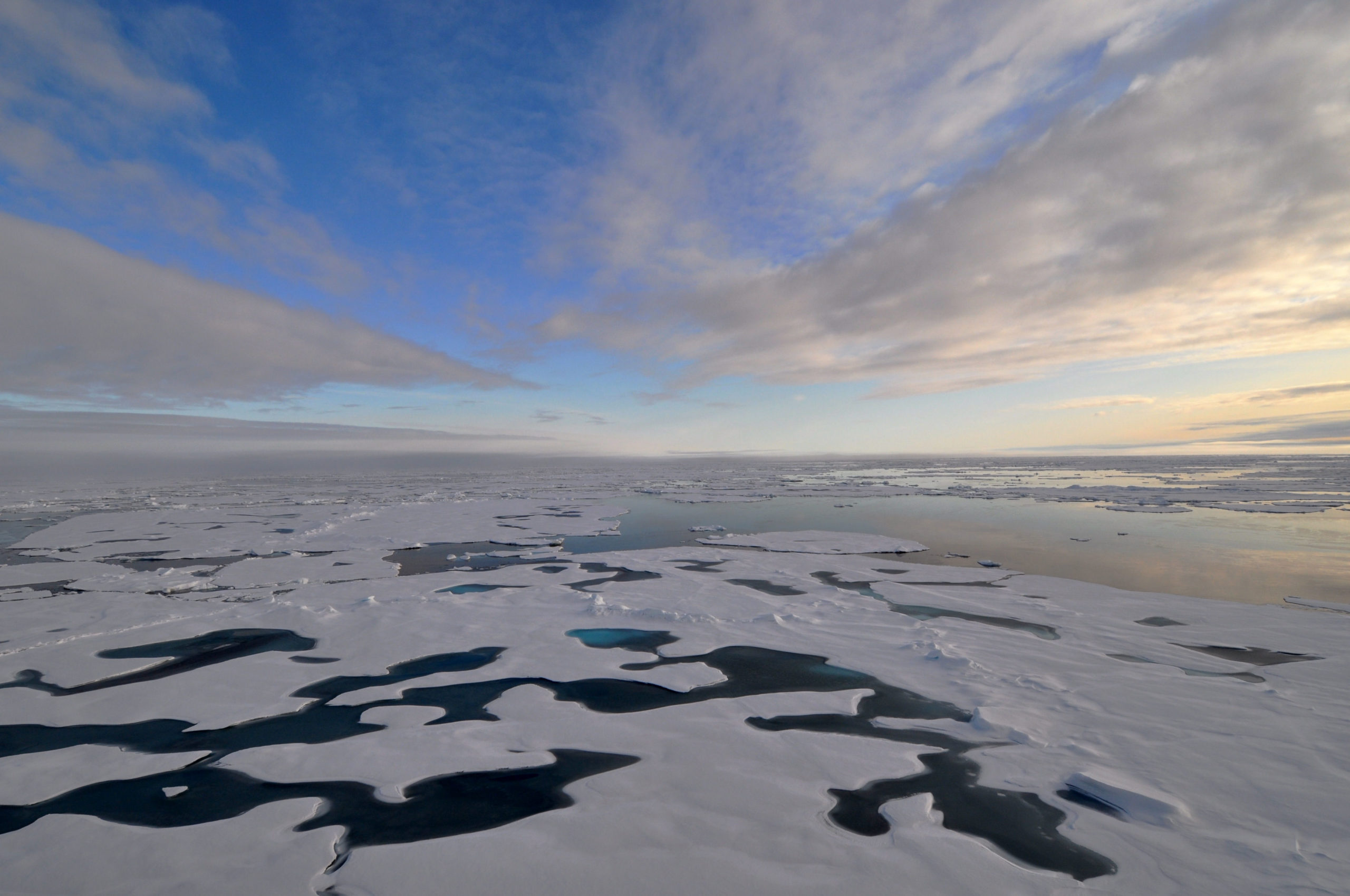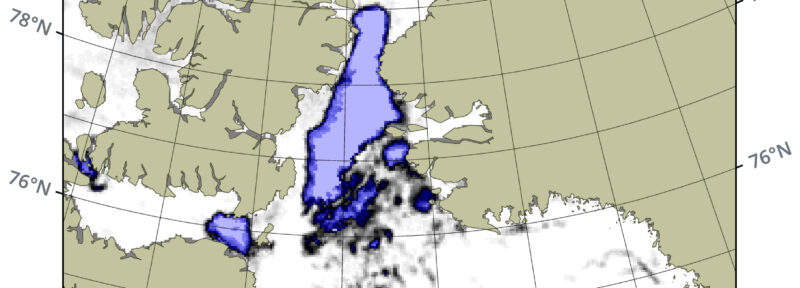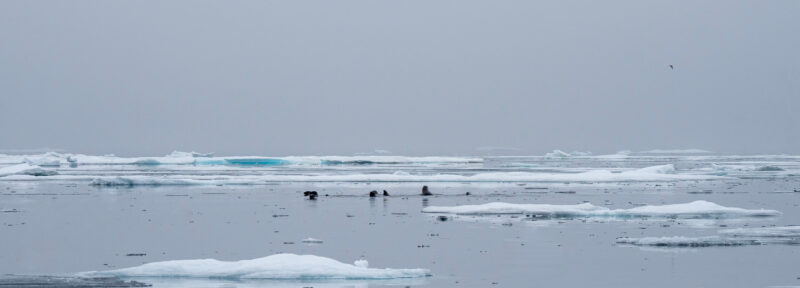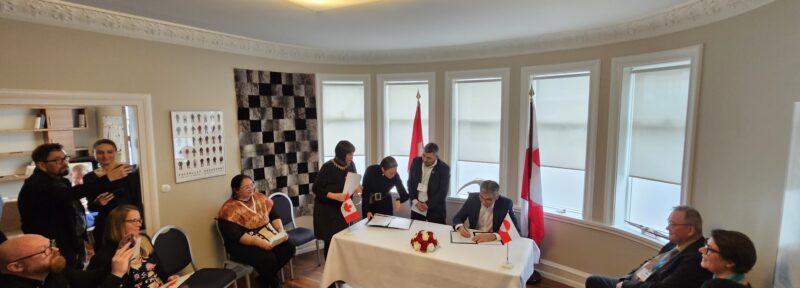New Report Summarizes Scientific Knowledge about Sarvarjuaq/Pikialasorsuaq & Looks to the Future
Ilitariyauyuq: NOAA/US Dept. of Commerce
The North Water Polynya, called Sarvarjuaq in Inuktitut and Pikialasorsuaq in Greenlandic, is one of the planet’s most productive ocean ecosystems. An open-water area surrounded by ice in northern Baffin Bay, it supports an abundance of marine mammals, including narwhal, walrus, seals and polar bears, as well as seabirds and a variety of fish. Covering about 85,000 square kilometres, the Arctic’s largest polynya provides crucial habitat during annual migrations.
Today, a new report about the North Water polynya (Sarvarjuaq/Pikialasorsuaq) was published by Fisheries and Oceans Canada (DFO) that summarizes the current state of scientific knowledge of the region. The Science Advisory Report was authored by the Canadian Science Advisory Secretariat (CSAS), and includes a high-level research overview. The report, which was translated into five languages, was developed in collaboration with Aarhus University (Denmark), the Greenlandic Institute of Natural Resource, as well as other researchers and expert knowledge holders.
Oceans North has encouraged the protection of Sarvarjuaq/ Pikialasorsuaq for many years and is pleased to see the release of these documents which reflect a commitment to conserving this rich biological region.
The report is significant for many reasons, most notably that it:
- Reaffirms Canada’s commitment to better understand this complex region and its ecological value to Canada and Greenland;
- Highlights the importance of the inclusion of Indigenous knowledge and collaboration with Inuit organizations, from local to regional levels;
- Identifies knowledge gaps and recommendations, specifically highlighting the types of research required to better understand this unique ecological system;
- Supports the multinational collaboration between Canada, Greenland, and Denmark and further discuss protection of this Arctic marine and coastal environment, and those who rely on it
The scientific review spans numerous themes including, climate, ice, ocean, atmosphere, productivity and biogeochemistry, the benthic community, zooplankton, fish, marine mammals and birds. It emphasizes that climate change is the leading stressor on Sarvarjuaq/Pikialasorsuaq and has already contributed to unpredictable weather patterns (e.g. winds), unpredictability of the ice bridges related to formation of the polynya, a reduction in the concentration and thickness of sea ice, and shrinking ice caps. These factors could all have an impact on sensitive habitat for important Arctic species (beluga, Arctic char, and seabirds), as well as on their diets, and could lead to shifts in species distribution/overall health. Historically, research programs in this region have been intermittent. This new report emphasizes the importance of continual and long-term monitoring and data collection, which is crucial for local and regional Inuit-led management of the region.
The inclusion of Inuit/hunter knowledge in the CSAS process has advanced over the last decade. However, this report also acknowledges that there are still gaps and challenges when it comes to effectively including Inuit Qaujimajatuqangit, or local and hunter knowledge, in each phase of the process, specifically the scientific review. It highlights the importance of collaboration with Inuit communities and organizations, such as local Hunters and Trappers Associations/Organizations, the Qikiqtani Inuit Association (QIA), Inuit Circumpolar Council, and local Associations of Fishermen and Hunters in Greenland – Nunaanni Aalisartut Piniartullu Kattuffiat (KNAPK). It emphasizes the need to uphold the new standards provided by the National Inuit Strategy on Research developed by Inuit Tapiriit Kanatami. DFO and the Canadian Government have committed to supporting QIA in the next phase of Inuit-led management and monitoring of Sarvarjuaq, and support a collaboration with Greenland and Denmark.
Oceans North has supported initiatives that focus on the inclusion of Inuit voices and perspectives in these processes, including the release of reports like “Bridging the Bay” and “People of the Ice Bridge”. Oceans North continues to support collaborations between researchers and Indigenous communities because of the great value that comes with understanding and respecting each other’s perspectives.
For more information about the report please see:
Proceedings: https://www.dfo-mpo.gc.ca/csas-sccs/Publications/Pro-Cr/2021/2021_011-eng.html
Science Advisory Report: https://www.dfo-mpo.gc.ca/csas-sccs/Publications/SAR-AS/2021/2021_052-eng.html
Research Document: https://www.dfo-mpo.gc.ca/csas-sccs/Publications/ResDocs-DocRech/2021/2021_078-eng.html
Here is the link to the Greenland /Denmark document in Danish:: https://dce.au.dk/fileadmin/dce.au.dk/Udgivelser/Notater_2018/Nordvandet.pdf .
For more information about Sarvarjuaq/Pikialasorsuaq please visit our webpage.
Annie Eastwood is a field scientist with Oceans North.





